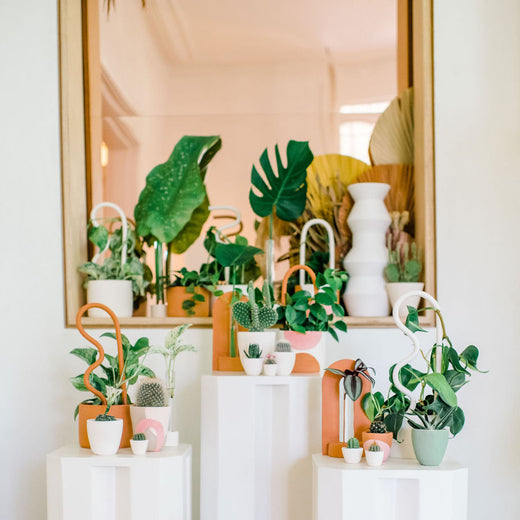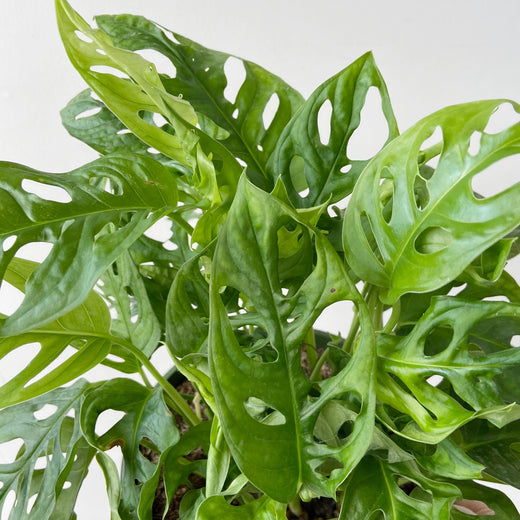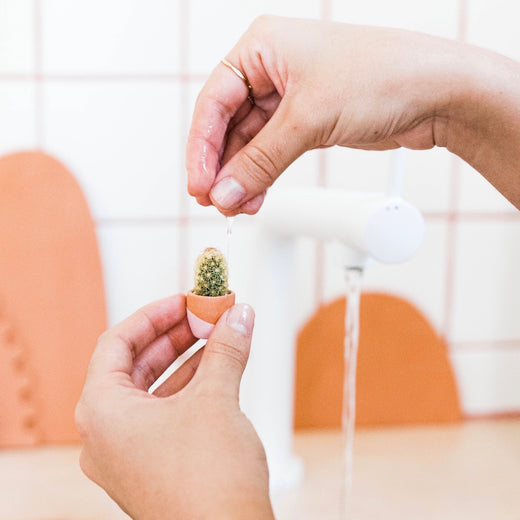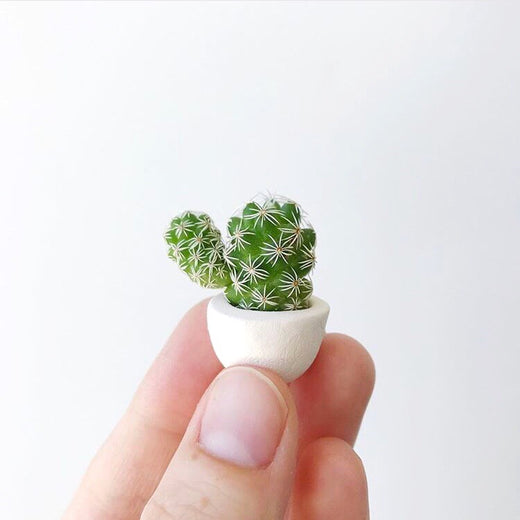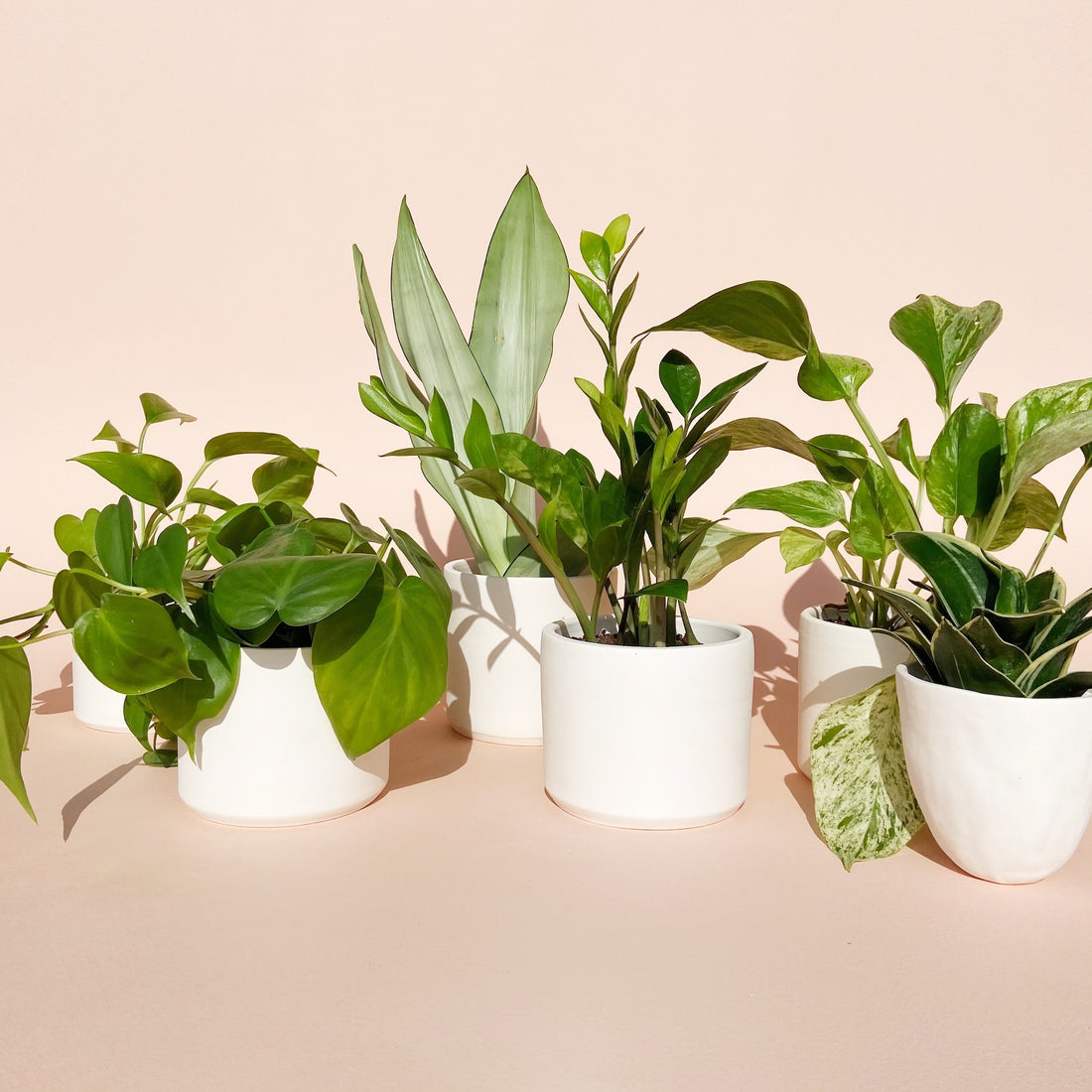How to *actually* understand types of indoor light
Let’s talk about plants and light.
People tend to talk about light as if we all know what “medium filtered light" from a “North facing window” is. And did you know you have “direct" or "full sun” in your home?
But what does all of that even mean?
We wrote this with all of the information we wish we had been told when we heard terms like “direct sun,” “filtered bright light,” “medium light,” “low light,” etc.
We break down exactly which each light type looks like with specific descriptions, examples, photos, and how to test light using shadows.
FULL SUN
Full sun is when the sun has unobstructed access to your plant. For example, a plant that is out in a field or a cactus in the desert. Lots of plants do not naturally grow in direct sun, and when they do, like cacti, they often look like they are surviving rather than thriving. All plants grown outside of nature are typically acclimated to bright indirect or bright filtered light in greenhouses rather than direct sun. Even plants that would like full sun need to be acclimated to that harsh light, little by little.
Remember, direct sun can occur or even be magnified by glass so if the sun has an unobstructed path through your window to your plant, that can be too harsh for many indoor plants.
Signs your plant is being damaged by full sunlight: Big dark spots on the cactus, succulent, or houseplant. These plants will later shrivel. Houseplants will develop drooping leaves. Both will eventually look dried out and may die quickly.

How to know if your plant is full sun: Look for intense, defined shadows of your plant and planter.
BRIGHT INDIRECT LIGHT
Bright indirect light is sunlight that is brightly shining into your house where your plant has an obstructed path or view of the sun.

How to know if your plant is bright indirect light: Look for an easy to see shadow but it is less defined than full sun. See if you can spot the sun from where your plant is sitting. If you cannot, that bright light is indirect.
MEDIUM LIGHT OR FILTERED SUNLIGHT
Medium light is when light has been diffused or partially obstructed. Think of a window with thin white curtains or sun that comes through your window that is filtered by the leaves of a tree that is not super thick with leaves. As its name suggests, it is right in the middle between dark shadow and direct light.

How to know if your plant is medium light: Medium light does not have much of a shadow, you may barely notice one.
LOW LIGHT
Low light can mean spaces that are a bit shadowy, for instance, if a window has bright light coming through, it will have a stark shadow maybe to the right or left of the window.
Signs your plant is struggling in low light: new leaves remain small, leaves are spread apart with plant stalks in between and reaching or stretching out towards light.

How to know if your plant is low light: You will not see a shadow at all in low light.
ZERO LIGHT
When people are talking about “zero light” what they really mean is very little to no natural light. Think of a windowless office or a bedroom where the curtains are often left closed.
We have specific plants for this kind of light that we have acclimated to thrive in zero light. Find them all in our Zero Light Tolerant Collection.
ARTIFICIAL LIGHT
Artificial light can be described as any light made artificially. Think of a windowless office with fluorescent lights or even daylight bulbs.
GROW LIGHTS
Grow lights are more powerful than other artificial lights. They are designed to give plants a lot of intense light in dark places to increase growth and photosynthesis. We are not big fans of grow lights (they are one of the main plant tools we avoid!), but in some situations they are needed. For instance, if you move into a dark apartment from a sunny space and want to keep your plants.
We like to work with nature to provide what the plant needs so we love low light and zero light tolerant plants in dark places rather than using grow lights.
Grow lights should be thought of as very bright sun. Your plants can easily be burned by grow lights and may even die and dry out completely. If you must use them, make sure they are a proper distance from your plants and only for as long as absolutely necessary for the health of your plant.
Still not sure what kind of light you are working with or what type of light will help your plant thrive? Shoot us an email at care@tierrasolstudio.com with a couple of photos and we’ll help you out!

